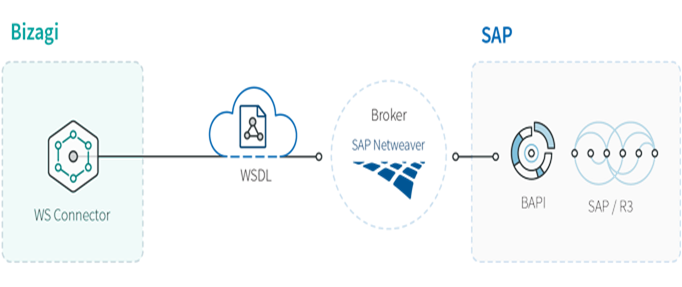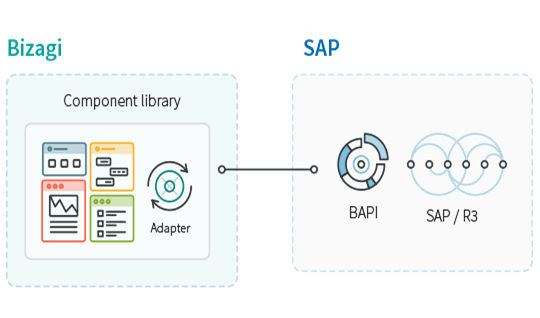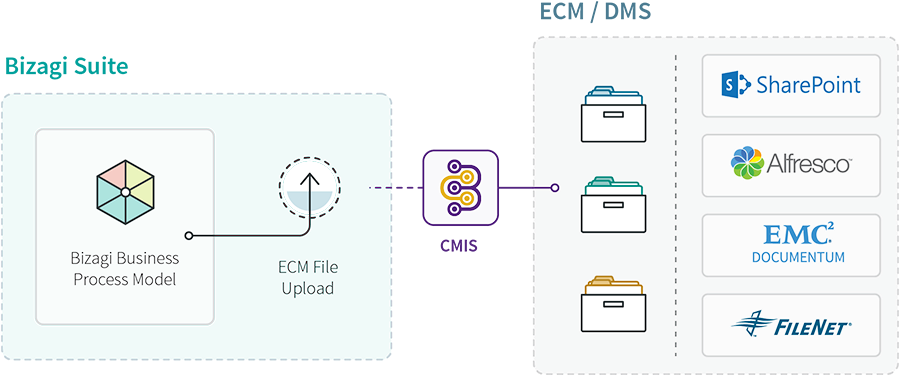Bizagi announce version 10.5 of Studio
Bizagi Ltd announced on August 11th 2014 the release of version 10.5 .NET & JEE release of its BPM software. There has been a major rebranding and Bizagi have simplified their product names, dropping the Bizagi name from the front. In addition. Enterprise and Xpress edition names have been phased out, making way for a cost-effective Starter Plan which enables enterprises to start small and advance quickly.
Integration
A major effort on emphasising the ability to integrate with major application software is also introduced. For SharePoint, Bizagi have introduced Web Parts for SharePoint. To connect the two products, the user drags and drops the pre-defined Web Parts into their workplace without programming and start customising the look and feel of the Bizagi’s style sheet. Bizagi acts as the process orchestration layer where all process related activities are securely managed and executed, but are instantly accessible in SharePoint.
For SAP, Bizagi supports various ways of connecting with SAP using SOA (web services) and its own connectivity methods:
- Broker-based integration: The broker (SAP NetWeaver) acts as an integration hub that houses message routing and data transformation logic. It serves as a middleware between SAP and Bizagi BPMS. The integration hub could be deployed on a SOA infrastructure containing an ESB (Enterprise Service Bus), to which the routing and look up functions of the SAP web services could be delegated.

- Adapter-based integration: Integration is based on Bizagi Component Library, where there is no broker but the component library acts as a ‘wrapper’ of all functions offered by the adapter to ensure seamless data connection.

- Broker and adapter-based integration: Integration offered via Bizagi Component Library and SAP NetWeaver. Here the Component library acts as a wrapper for an adapter and SAP NetWeaver acts as a broker. This option is recommended when there is a need to connect via secured services (certified) and based on WFC. By using an adapter, there is no need to have extensive knowledge of BAPI implementation. The BPMS and SAP systems are decoupled, allowing changes to be carried out on the broker while leaving the core systems untouched.

Bizagi BPMS uses the Content Management Interoperability Services (CMIS) 1.0 standard to connect to Enterprise Content Management (ECM) systems. The standard defines the generic set of web services that expose the ECM capabilities and handle the metadata. This way Bizagi processes can seamlessly access documents in all ECMs supporting CMIS 1.0 including Alfresco, Documentum, FileNet and, of course, SharePoint. This integration means that a document an be uploaded with a single click and, in,addition, there is support for check-in, check-out or undo the document check-out.

Improved Mobility
New enhancements ensure Bizagi mobility caters for the highest-security environments. User credentials are validated at each login and access to sensitive project data is controlled on the go. Jolanta Pilecka, CMO of Bizagi stated, “Adding mobility to BPM extends its role from seamless back-office automation to optimising the user journey right through the whole application.” Bizagi comes with a complete palette of interface Widgets available for any device, including multi-page grids and data tables. Bizagi’s Widget Xchange offers a wide collection of complex UI building blocks to help users speed up their development.
Other enhancements
A simple drag-and-drop Association Control allows for easy management of complex relationships, allowing for faster re-grouping and allocations.
Other features in Bizagi BPM Suite v.10.5 include: improved Library Rules in Expressions; BAM & Analytics Reports availability on Android devices; IIS Express support; and Encryption of data model attributes for maximum project security.
Comments
Once again Bizagi have worked closely with their customers to enhance and develop their product to make it even better. The work on integration goes a long way to make a prospective client happier, although much was already there it was not immediately obvious to a first-time user.
